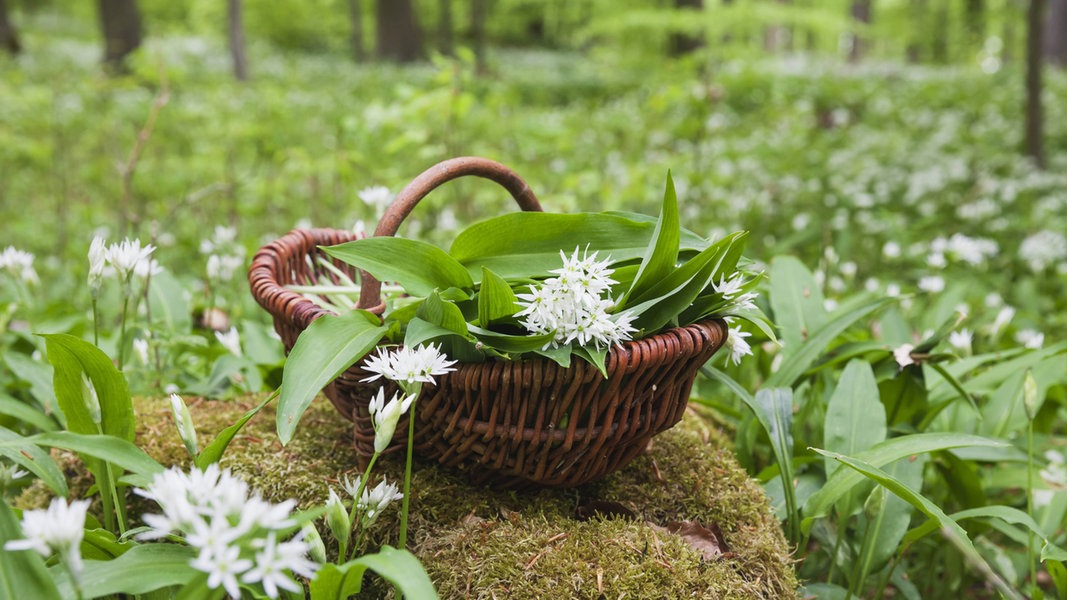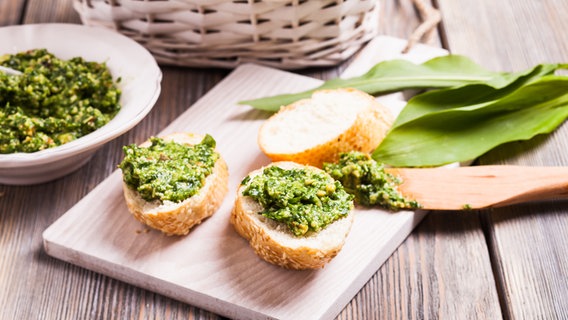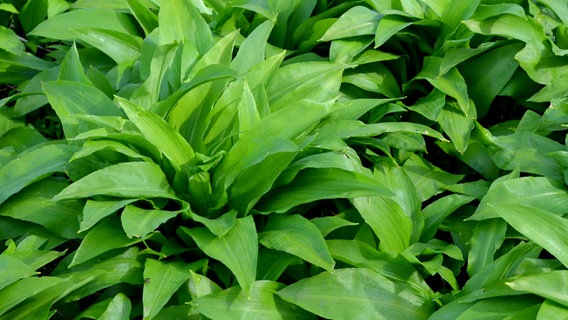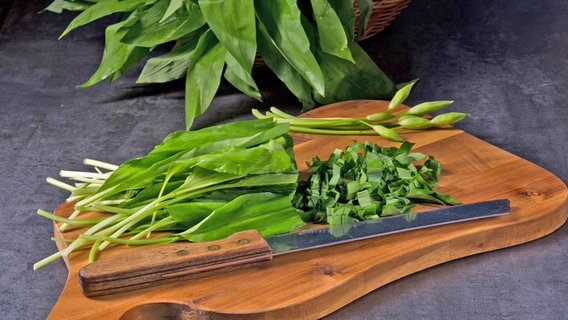As of: 03/31/2023 6:54 p.m
Delicacies from the forest: wild garlic grows in shady spots in spring. If you collect the leaves yourself, you should take a close look to avoid confusing them with poisonous doubles.
The wild garlic season is short and usually begins in April. Depending on the weather, the first tender leaves appear as early as March. Around May, the plant begins to flower and the harvest season ends, when the leaves lose their aroma.
Collect wild garlic in the forest
Wild garlic belongs to the Allium genus and is related to chives, onions and garlic. The plant with the approximately 20 to 30 centimeters long, green leaves grows mainly in mixed deciduous and beech forests and often covers larger areas on the ground. In order to protect stocks, you should only ever harvest one leaf per wild garlic plant. Wild garlic leaves may generally not be picked in nature reserves.
Confused with lily of the valley, arum and autumn crocus
Wild garlic is easy to confuse, so you should know the plant well.
When collecting, caution and, above all, knowledge of plants is required: wild garlic is easily confused with lily of the valley, autumn crocus and arum, which are very poisonous. Lily of the valley triggers nausea and vomiting. Autumn crocus and arum contain colchicine – eating just one leaf can be deadly. Particularly insidious: wild garlic often grows in the immediate vicinity of its dangerous doppelganger.
Look carefully when picking
The so-called rubbing trick is often recommended for differentiation: If you smell the characteristic garlic smell when you rub the leaves, it is wild garlic. But experts warn against this method: If you rub several leaves on your hand, the smell sticks to your fingers – and the next time the highly poisonous arum growing next to it supposedly smells of wild garlic.
Recognize wild garlic for sure
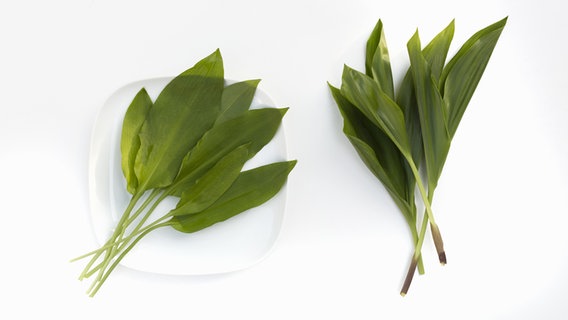
Caution, risk of confusion: left wild garlic leaves, right the poisonous lily of the valley.
Important optical distinguishing features: wild garlic is dull green on the underside of the leaf, has a thin petiole and grows individually out of the ground. Lily of the valley, on the other hand, grows in pairs on the stem, their leaves are shiny on the underside, the leaves of the autumn crocus even on the top and bottom. Although aroid grows in similar locations and at the same time as wild garlic, it differs significantly in its more arrow-shaped leaf shape with irregularly shaped leaf veins.
Don’t be afraid of the fox tapeworm
On the other hand, the risk of becoming infected with fox tapeworm through self-collected wild garlic and years later of contracting what is known as echinococcosis, which damages the liver, is extremely low. This has been shown by more recent studies.
Store wild garlic correctly

Wild garlic blossoms are also good for garnishing. However, the leaves of the flowering plant lose their aroma.
Anyone who is unsure and does not want to collect the spring herbs themselves will also find what they are looking for at weekly markets and in greengrocers during the season. When buying, make sure that the wild garlic has not yet bloomed. It is best to process the herb immediately, because ramsons will only keep for a day or two in the fridge. To store, wrap in damp kitchen paper and place in the crisper drawer of the refrigerator.
Process wild garlic into butter and pesto or put them in oil
The spring herb can also be frozen, preferably in portions in freezer bags or as wild garlic butter. Finely chop the wild garlic, mix with soft butter and season with salt, pepper and lemon juice to taste. For a pesto, mix the wild garlic with roasted pine nuts, grated Parmesan and a good oil and puree. Alternatively, wild garlic can be marinated in olive oil. Well sealed and seasoned with a little sea salt, wild garlic oil will keep for a few months.
Grow wild garlic in your own garden
If you have your own garden, you can easily grow the spicy herb. The plant prefers shady, damp locations and usually spreads relatively quickly there.
Further information

